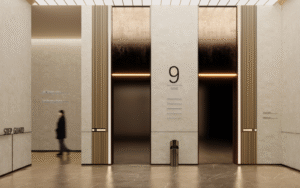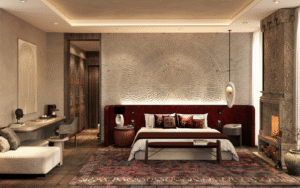Editor Hamish Kilburn lands an exclusive interview with the founders of INODA+SVEJE, who are central characters in Minotti’s 2022 Collection, launched this week at Salone del Mobile…
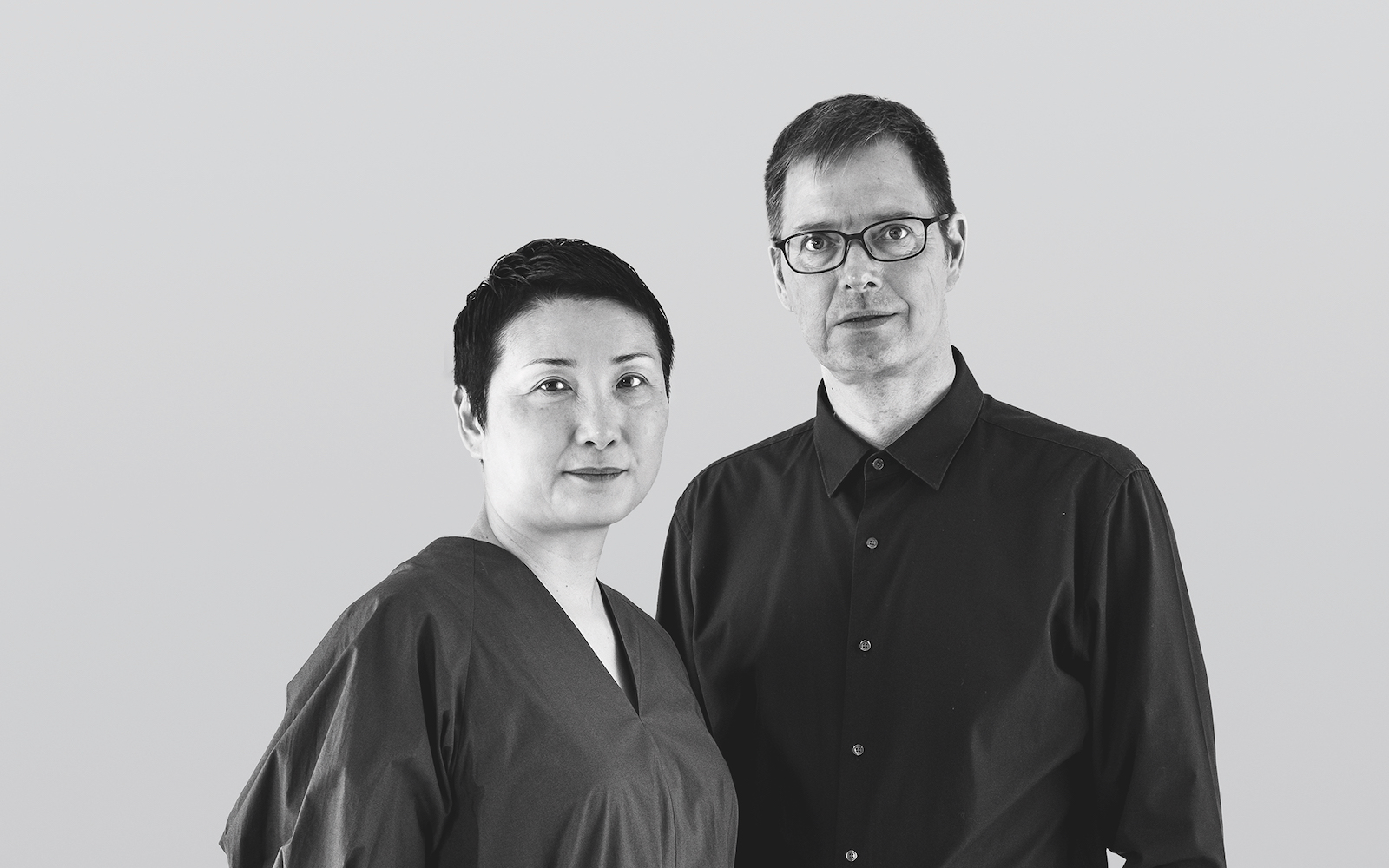
“We are not used to this scale of collaboration,” confesses Nils Sveje and Kyoko Inoda, Co-Founders of INODA+SVEJE, in harmony, before even having the chance to see their latest masterpieces on display at Salone del Mobile.
I’ve managed to speak to the design pair ahead of the media circus arriving. We are sat in a corner of Minotti’s 3,200 square-metre stand, hidden from view. Just hours before, their inaugural collaboration with the Italian furniture brand was announced, and their products – Yoko, Lars and Sendai – were unveiled to the world. What is perhaps most appealing from my perspective is the realisation that the designers have no idea just how much of a buzz has circulated around their latest products and the collaboration, which is humbling. It almost feels as if I have been given the first interview with an actor or actress about to land their career-defining movie, and in many ways I have ahead of the new products being available in Minotti London’s showroom in just a few months time – a premiere, if you like.
“The chair, for example, is just the interface between the person and the rest of the house.” – Nils Sveje, Co-Founder, INOD+SVEJE.
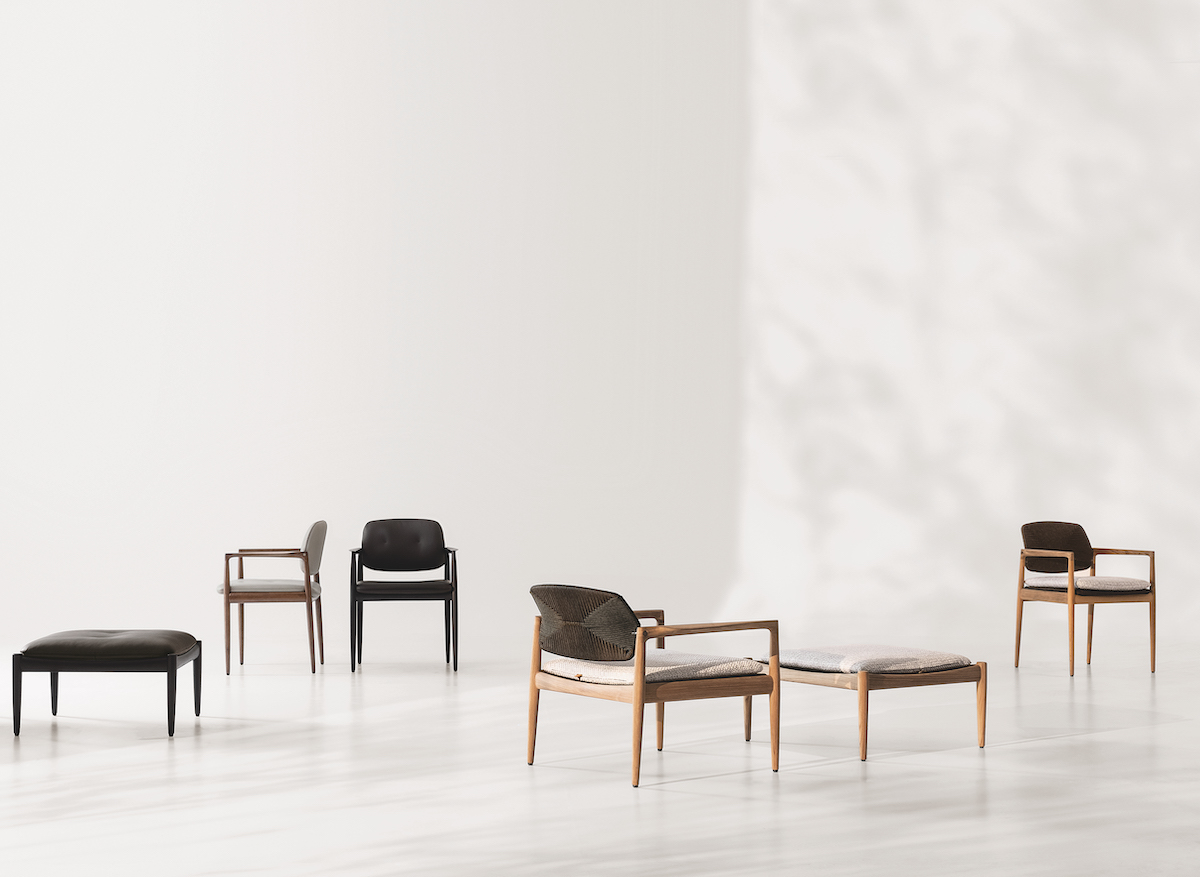
Image caption: The Yoko, designed by INODA+SVEJE. | Image credit: Minotti
“Before now, all of our collaborations have been with small, talented artisans, so this six-month process [working with the Minotti family] has been different in a way that has been equally refreshing,” Inoda says. The studio in which the pair own and nurture has, like their products, been formed and has evolved naturally. Perhaps the most obvious unique aspect to the studio’s style is the meeting of two design cultures. Sveje is Danish while Inoda is Japanese. The thread that binds each culture, far away geographically, is the shared respect for minimalism that has, over the years between the two, been refined into what is fair to say the studio’s ‘signature style’.
INODA+SVEJE was founded in 2000 in Copenhagen and is now, since 2003, situated in Milan. Together, working as a team of two – expanding beyond that would disrupt each designer’s harmony (their words, not mine) – they have developed a sensitive approach applied to both the design process and the resulting form and aesthetics. “We design around the whole environment,” explains Sveje. “The chair, for example, is just the interface between the person and the rest of the house. That way of physical interaction with products has always been very interesting to us.”

Image caption: Lars, designed by INODA+SVEJE. | Image credit: Minotti
Using this methodology, the designers are used to creating products at their own pace, answering only to the natural rhythm of the design process. So, when Minotti approached the studio with its collaborative proposal, and with a tight deadline, the designers were challenges to put their resources – and learnings – into the project. “Each week, we dedicated a day working with the team at Minotti,” explains Inoda. “Generally the process is something between us, so to be able to work with a dedicated and talented team in a brand that shelters such specialists was a real privilege,” adds Sveje.
There’s a distinct lack of ego when speaking to the two designers, reinforcing the opinion that there’s less of an emphasis on the ownership of an idea and there’s more focus on the collaborative process and learnings along the journey. “[This partnership has made us realise that] we can only put so much into this ourselves,” says Sveje. “We are working with specialists who have reached a degree that we can never achieve. You have to respect that, because if you know how to make a collaboration work then you can achieve new levels in design.”
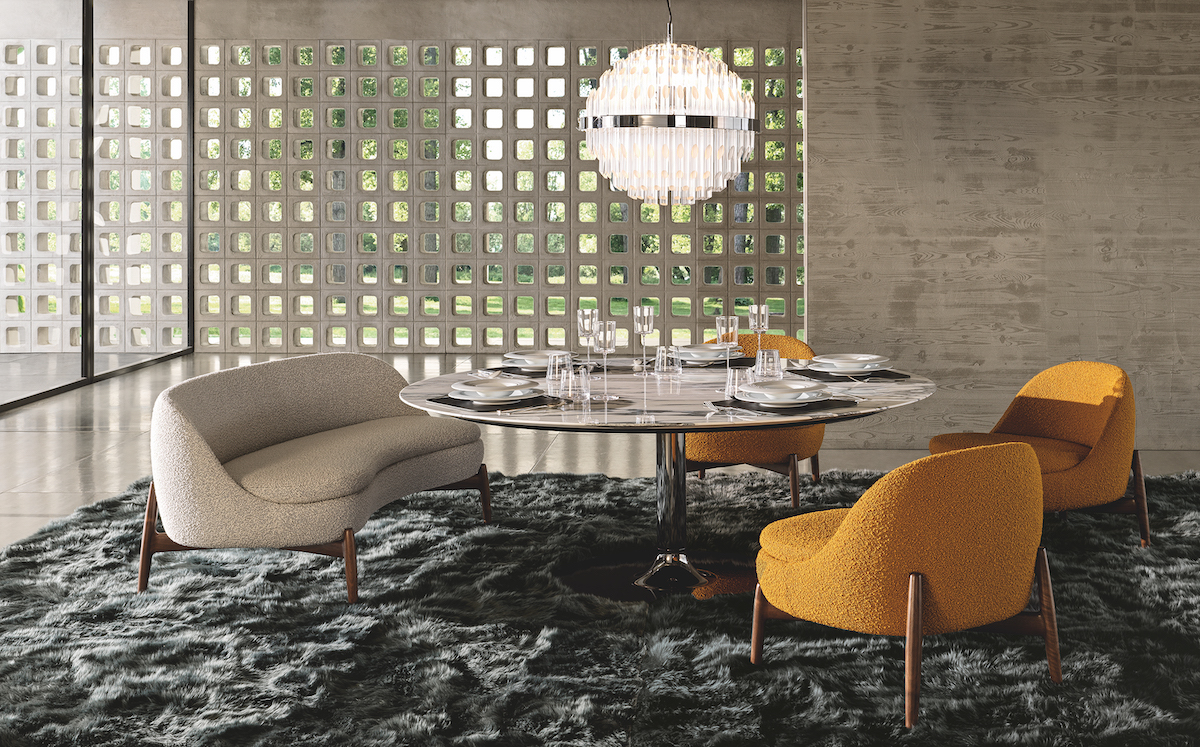
Image caption: The Sendai sofa and chair, designed by INODA+SVEJE. | Image credit: Minotti
The first protagonist to emerge as a result of this meaningful collaboration was Yoko, a light and elegant seating design; a Japanese name with Scandinavian lines that come together in a piece of furniture with an aesthetic matrix, flavoured by both cultures. Delicate and sinuous lines, the item has been created with precious cabinet-making interlocking techniques that enrich the structure of legs and armrests in solid ash open pore wood lacquered with a Liquorice colour, or in solid Canaletto walnut stained Light Brown, a chromatic choice that lends a more decisive tone to the elegance of the silhouette. “We spent most time on this furniture piece,” says Inoda. “We perceive minimalism the same as nature – it’s never in straight lines,” explains Inoda. “The product is curved and authentic.”
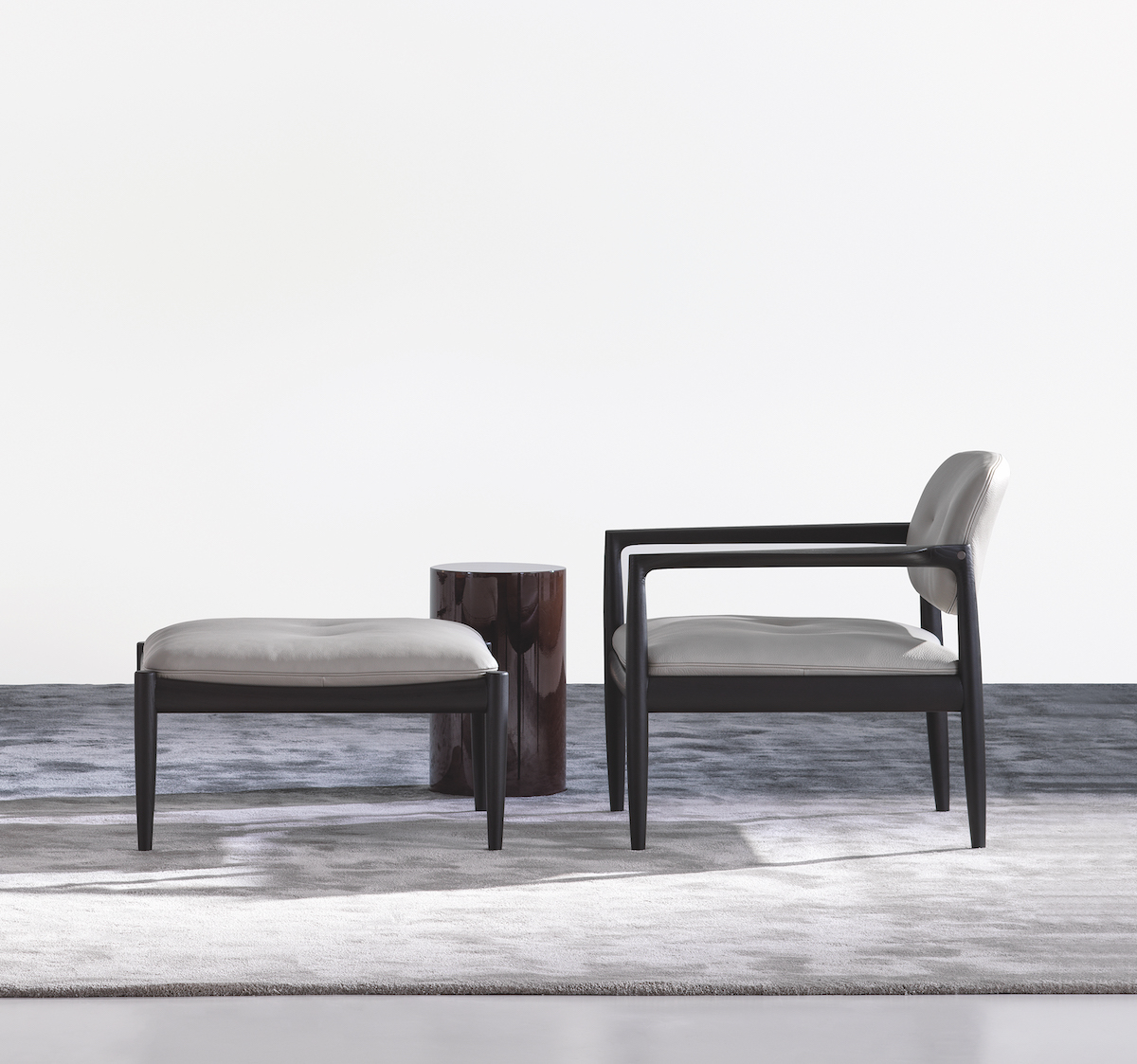
Image caption: The Yoko, designed by INODA+SVEJE. | Image credit: Minotti
In addition to the Yoko chairs, the signature of the Japanese-Danish duo is also imprinted in the design of the Lars sofa with its organic shape, and in the compact Sendai seats in the small sofa, armchair, dining and lounge little armchair versions.
It may be premature to say, but if past Minotti collaborations are anything to go by, it feels like this collection is just the beginning of a meaningful journey that will no-doubt lead to more innovative pieces in the near future. After all, the same way natural laws shape the world around us, collaborations that are born from genuine admiration often lead to the most impactful and longest-lasting design statements.
Main image credit: INODA+SVEJE











